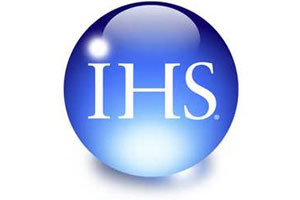Strong growth is expected for the smart connected home appliance market in the next five years, according to IHS Inc. (NYSE: IHS), the leading global source of critical information and insight. In fact many appliance makers are already shifting focus from low-profit, low-growth traditional (non-smart) products, toward the emerging high-margin, revenue-oriented smart connected appliance market.
Based on the latest information from the IHS Home Appliances Intelligence Service, the global smart connected white-goods market is forecast to grow at a five-year compound annual growth rate (CAGR) of 134 percent, from fewer than one million units shipped in 2014 to more than 223 million units by 2020. The appliance types covered in this research include washing machines, clothes dryers, dishwashers, refrigerators, room air-conditioners and large cooking appliances. If other types of connected home appliances are included – like coffee machines, robotic vacuums, rice cookers, microwave ovens, air-purifiers, and electric toothbrushes – the total addressable smart connected home-appliance market is forecast to reach 700 million units worldwide by 2020.
There are three critical factors that will affect smart appliance adoption: energy management initiatives, such as dynamic pricing, government initiatives and structure of utilities; standards for interoperability; and other marketplace dynamics covering product pricing, retail environment, competitive landscape, the approaches adopted by suppliers and overall interest in smart home technology.
“IHS uses a conservative approach in our forecasting models and there is certainly opportunity for the market to grow even more,” said Dinesh Kithany, senior analyst of home appliances for IHS Technology. “However growth rates depend on how rapidly appliance makers educate and engage with end consumers and provide them with an appropriate price-to-value benefit.”
Samsung, LG Electronics and other consumer electronics giants vying for first-mover advantage have shifted their focus from mobile devices, television and other saturated businesses, to smart home technology devices. “Electronics giants could also benefit from the convergence of mobile devices and TVs with their home appliance business lines, as all of these devices can integrate well with smart technologies,” Kithany said.
In the next two to three years, the smart home technology market is expected to consolidate, and by 2018 there will be just a couple of connectivity platforms, operating systems and a small number of technology-oriented appliance companies dominating the market. The recent announcement that ZigBee is partnering with Thread is one such example. “Consolidation will drive consumers toward earlier adoption of smart home technology, with growth similar to what the mobile phone industry experienced just a few years ago,” Kithany said.










